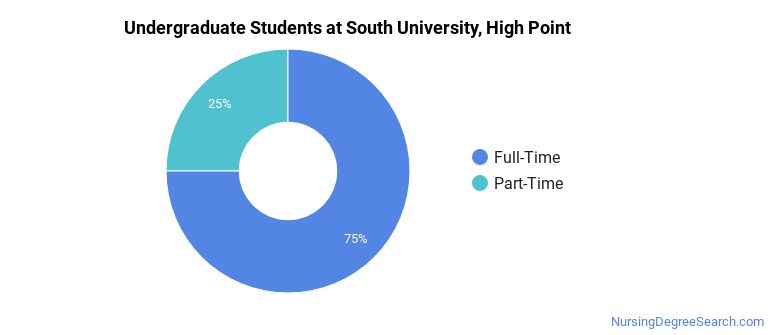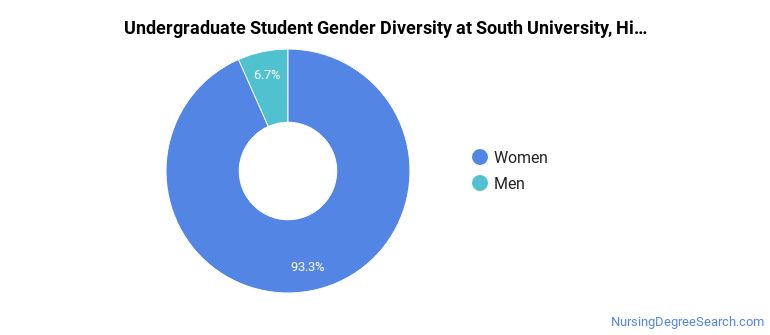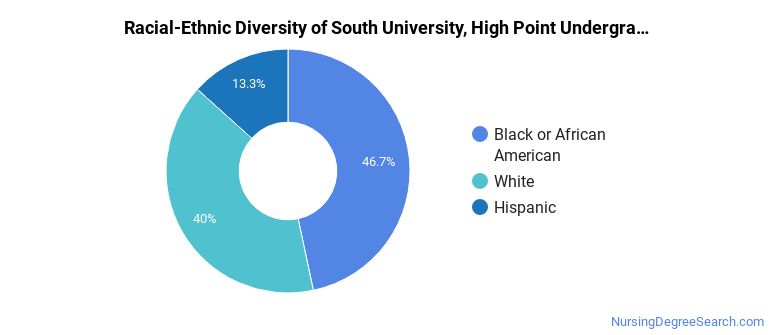South University, High Point Nursing Programs
Located in High Point, North Carolina, South University, High Point is a private for-profit institution. The surrounding area of the school is a good match for students who enjoy city life.
Where Is South University, High Point?

Contact details for South University, High Point are given below.
| Contact Details | |
|---|---|
| Address: | 3975 Premier Drive, High Point, NC 27265-8320 |
| Phone: | 336-812-7200 |
| Website: | www.southuniversity.edu |
How Do I Get Into South University, High Point?
You can apply to South University, High Point online at: www.southuniversity.edu/admissions/admission-info/applying
Can I Afford South University, High Point?
Student Loan Debt
It's not uncommon for college students to take out loans to pay for school. In fact, almost 66% of students nationwide depend at least partially on loans. At South University, High Point, approximately 100% of students took out student loans averaging $9,500 a year. That adds up to $38,000 over four years for those students.
South University, High Point Undergraduate Student Diversity

There are also 3 graduate students at the school.
Gender Diversity
Of the 15 full-time undergraduates at South University, High Point, 7% are male and 93% are female.

Racial-Ethnic Diversity
The racial-ethnic breakdown of South University, High Point students is as follows.

| Race/Ethnicity | Number of Grads |
|---|---|
| Asian | 0 |
| Black or African American | 7 |
| Hispanic or Latino | 2 |
| White | 6 |
| International Students | 0 |
| Other Races/Ethnicities | 0 |
South University, High Point Nursing Concentrations
The table below shows the number of awards for each concentration.
| Major | Bachelor’s | Master’s | TOTAL |
|---|---|---|---|
| Registered Nursing | 7 | 0 | 7 |
| Family Practice Nurse/Nursing | 0 | 3 | 3 |
| TOTAL | 7 | 3 | 10 |
References
*The racial-ethnic minorities count is calculated by taking the total number of students and subtracting white students, international students, and students whose race/ethnicity was unknown. This number is then divided by the total number of students at the school to obtain the racial-ethnic minorities percentage.
More about our data sources and methodologies.
